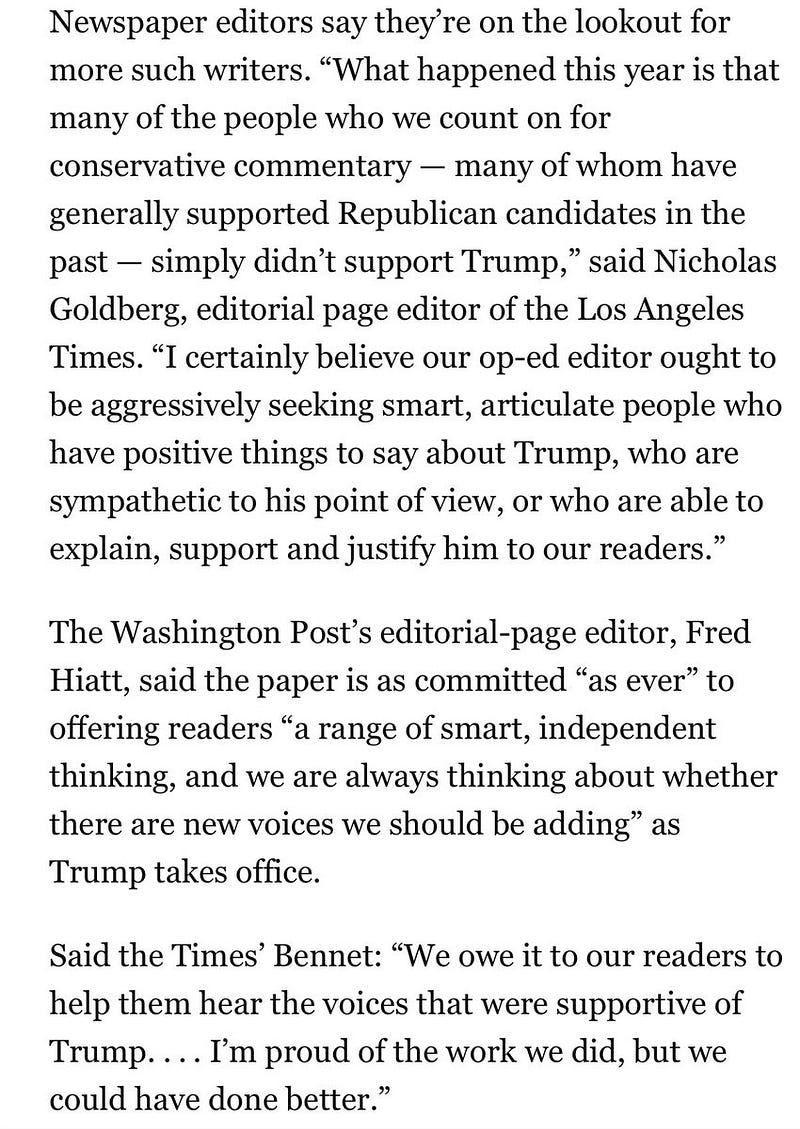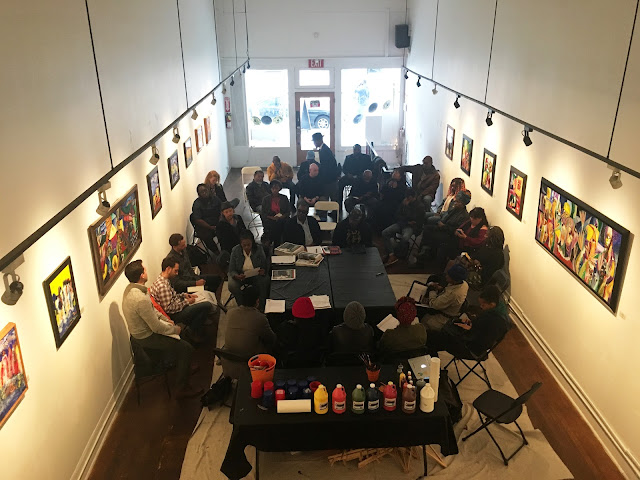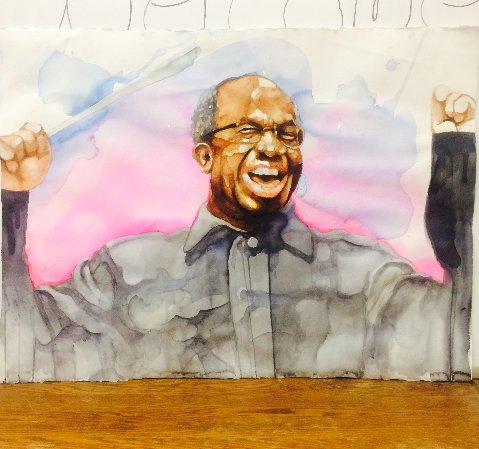An Open Letter to Fellow Minority Journalists

Over
the next year or two, media — especially prestige print media — will
begin thinning out its ranks. The economic forecast, despite temporary
spikes in post-election subscriptions, is not good and headcount spots
will have to be cleared to make room for all the incoming pro-Trump
takes. “Identity politics writers” (read: anyone who isn’t white and who
doesn’t spend 99% of their time reporting) will almost certainly be the
first to go.
In
reality, this is just a self-correction on the part of prestige print
media. As early as three years ago, the entire senior editorial staff of
the New Yorker magazine was
white (the web, where I worked for a short stint in 2014, was slightly
more diverse. I even sat next to a minority, which was a first for me in
my publishing career.). Their assistants, save one, were white. The
same, I believe, was more or less true of New York and the New York Times Magazine, where
I, full disclosure, am a writer-at-large. Those places, of course,
employed a small number of minority writers, but the power structure was
always controlled by the same types of people.
After Ferguson, I remember being in meetings for the web team at The New Yorker where
it became painfully obvious to everyone in the room that we simply did
not have a writer to tackle the massive change that was happening in the
country. Good hires were made and over the next two years, the magazine
and web (mostly the web) brought on almost a dozen new minority writers
and editors. This, even when I worked there in 2014, would have been a
completely absurd scenario. Back then, me and one of the only other
minorities on the 20th floor of the old Conde Nast building would have
to routinely schedule lunches just so we could vent about the totemic
whiteness of the place we had dreamt of working our entire lives. If you
look at the employee rolls of all these prestige print and web outlets,
you’ll see the same, exact pattern of hiring over the past two years. I
used to think this changing of demographics in prestige places could
lead to a new era of enlightened and forceful publishing. I am no longer
so optimistic.
I
bring this up because I think it’s important that minority writers (I
have decided to stop using “people of color” for reasons I might explain
later, but mostly because it feels a bit too cheery in Trump’s America)
be honest with ourselves. Many of us were hired in the last two years
and almost every single one of us reports to a white editor who will
kowtow to the panic of his or her publisher. Too many of us were brought
into media as part of a cynical push to turn “race writing,” especially
race writing about pop culture, into a click factory (Or, perhaps, more
tellingly, to satisfy the guilt of white editors who finally looked
around and realized that their liberal values were in direct conflict
with the optics of their workplace.). The media companies who clap
themselves on the back because they have an “authentic voice” writing
about Beyoncé or the VMAs did not make a real commitment to diversity.
Instead, they put forward poorly paid “fellowships” or meager web
contracts that require no investment on their part. They, in large part,
do not give out reporting assignments that might build up skills that
could translate into long careers. The sort of work they do have so many
of us do — “woke” pop culture writing — will only last as long as it
drives the wan, asymmetrical glow of Media Twitter.
The
real path to success as a journalist still remains the same: Have
enough independent wealth so that you can take an unpaid internship or a
$35,000 year job as an editorial assistant or fact-checker at a
prestigious place and then work the office politics game (read: know how
to work a room of Ivy League graduates) to the top. In five or ten or
fifteen years, the network you build up during those early years will
occupy the highest spots in media and they will bring you into the power
structure.
This
same media has sprayed its panicked guts all over the walls in the
weeks following the election, but it will eventually settle down into
what these prestige journalistic outlets have always
been — center-right, bourgeois takes read by lawyers on planes. And
since the majority of lawyers on planes aren’t joining up with ‘the
resistance’ (whatever the fuck that means), editors and publishers will
start hiring alt-Tucker Carlsons so they can hear both sides. They will
need to clear headcount spots to do this and they will quietly start
purging the same writers they hired so enthusiastically — with rousing
rounds of Tweet applause — two years ago.
They
will do this while knowing that the Democratic presidential candidate
won the popular vote by almost three million votes despite
catastrophically myopic campaign strategy. They will do this while
knowing that anyone hired to be a “pro-Trump journalist” will, by the
edict of his or her title, feel the need to defend the President’s
patently false tweets and his attacks on reporters. They will do this
while sitting on bloated, absurd panels where they will tell young
writers that the only job of
the journalist is to “speak truth to power.” They will do this while
still tweeting the same virtue signaling garbage they tweeted out over
the past two years, while still convincing themselves that every other
media outlet is bad except their media outlet. The tyranny of “good
enough” (the way these prestige media outlets stayed so white in the
past was to say, more or less, that anyone who could touch a word of
copy had to be “good enough,” a standard, of course, that only meant
“good in the same way that I am good”) will be restored.
This
is the uncomfortable truth we face. But over my relatively short
career, I have met so many wildly talented and generous and serious
minority journalists who have provided me with emotional and spiritual
support that I will never be able to repay. These relationships are
still there. The talent is still there. The audience for our work is
still there. What’s changed is where we will publish that work and the
spaces in which we will foster new friendships and rivalries.
We,
the like-minded who believe that there is value in the cliché of
speaking truth to power and value a progressive coalition over
careerism, have to start building our own shit.









 l
l








